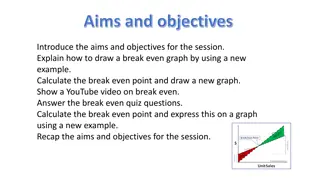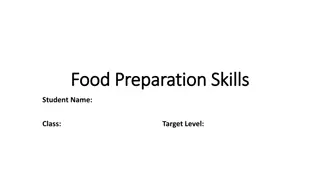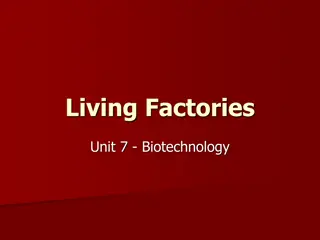Investigating Yeast Activation: What Does Yeast Need to Break Dormancy?
This investigation delves into understanding what yeast requires to become active and break its dormancy. By providing warmth, water, and food sources like cookies, students study the impact of these elements on yeast activation. Through practical experiments involving yeast in different conditions, observations are made to determine the essential factors needed for yeast to exhibit energy and metabolic activity.
Download Presentation

Please find below an Image/Link to download the presentation.
The content on the website is provided AS IS for your information and personal use only. It may not be sold, licensed, or shared on other websites without obtaining consent from the author.If you encounter any issues during the download, it is possible that the publisher has removed the file from their server.
You are allowed to download the files provided on this website for personal or commercial use, subject to the condition that they are used lawfully. All files are the property of their respective owners.
The content on the website is provided AS IS for your information and personal use only. It may not be sold, licensed, or shared on other websites without obtaining consent from the author.
E N D
Presentation Transcript
Investigation 2 Part 1A Focus Question: What does yeast need to break its dormancy? developed by Caryn Dingman July 2015 1
Investigation 2 Part 1A Yeast is a living organism. * yeast is not an animal or a plant * yeast is a fungus and has only one cell * yeast can t make its own food * until you give yeast food, it s like yeast is asleep or dormant What do you think yeast might need to become active? developed by Caryn Dingman July 2015 2
Investigation 2 Part 1A Each group will get: * warm water can provide water & warmth * cookies food source * zip-loc bags can define space * 50 mL syringe to measure & distribute water * thermometers * 1 L containers can become a place to keep yeast warm * sharpie marker for labeling developed by Caryn Dingman July 2015 3
Investigation 2 Part 1A How can we investigate what is needed to activate yeast? If warmth, water, and food activate the yeast, how will we know if yeast needs all 3 to become active? developed by Caryn Dingman July 2015 4
Investigation 2 Part 1 1.) Each group will get 2 1L zip-loc bags label one bag food or cookie no label on other baggie 2.) add 2 level 5mL spoons of dry yeast into each bag 3.) fill syringe with 50mL warm water & add to bags- make sure all yeast is wet 4.) put 2 animal crackers in food bag- get them wet and crush them a little pressing on the bag gently 5.) seal bags pressing out air as you go 6.) put bags in 1L container warm water bath developed by Caryn Dingman July 2015 5
Investigation 2 Part 1 While your baggies spend about 10 minutes in their bath , look at the 3 cookie labels. Read the cookie ingredients on each label. Discuss and answer the questions. Each student should write a response in his/her Science Notebook. developed by Caryn Dingman July 2015 6
Investigation 2 Part 1A Remove the baggies from their bath. What changes do we see? The bubbles and gas in the baggie with the cookies show that the yeast is using energy. Yeast with plain water is not active; it s not using energy. The cookie is the source of energy for the yeast. developed by Caryn Dingman July 2015 7
Investigation 2 Part 1A Look at the Activating Yeast Sheet in your Science Notebook. What are the 2 most abundant cookie ingredients? flour sugar The cookie is the source of energy for the yeast. But, is it the flour or the sugar that activates the yeast? We ll explore this in Part 1B of our Investigation! developed by Caryn Dingman July 2015 8
Investigation 2 Part 1B 1.) Fill 2 water bottles with cup very warm water. Label 1 bottle S and the other bottle F with the sharpie marker. 2.) Add teaspoon sugar to the S bottle and teaspoon flour to the F bottle. 3.) Add 1 packet of dry yeast to each bottle and gently swirl the contents to mix them a bit 4.) Place a balloon over the top of each bottle and observe what happens. developed by Caryn Dingman July 2015 9
Investigation 2 Part 1B 1.) In your Science Notebooks make a drawing of each bottle. Label your drawings to make them clear. 2.) Describe what happened to both bottles. developed by Caryn Dingman July 2015 10
Investigation 2 Let s answer the Focus Question: What does yeast need to break its dormancy? Sugar is what yeast needs to wake it up or break its dormancy. Carbon dioxide gas is released when yeast is eating. Yeast eats by absorbing sugar through its membrane. The balloon inflating over the bottle with the sugar shows carbon dioxide release. developed by Caryn Dingman July 2015 11























